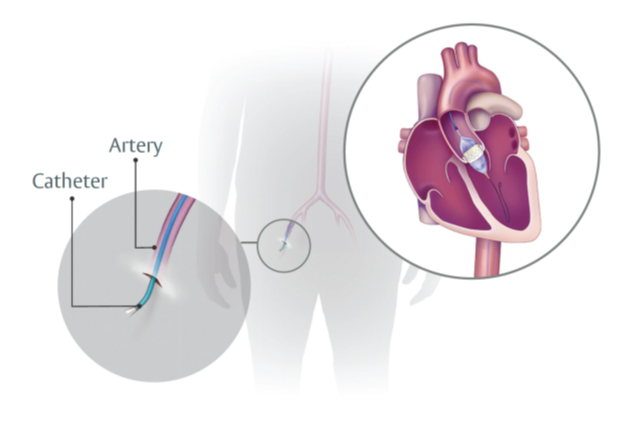 Posted on June 20, 2024
Posted on June 20, 2024
A Comprehensive Guide to Transcatheter Aortic Valve Replacement (TAVR) Treatment
Introduction
Transcatheter Aortic Valve Replacement (TAVR) has revolutionized the treatment of aortic stenosis, offering a minimally invasive alternative to traditional open-heart surgery. This procedure is particularly beneficial for patients who are at high risk for conventional surgery. In this blog, we will delve into the intricacies of TAVR, exploring its benefits, procedure details, recovery process, and long-term outcomes.
Understanding Aortic Stenosis
Aortic stenosis occurs when the aortic valve narrows, restricting blood flow from the heart to the rest of the body. This condition can lead to symptoms such as chest pain, shortness of breath, fatigue, and even heart failure if left untreated. Traditional treatment options included medication and open-heart surgery, but these were not suitable for all patients, especially those with higher surgical risks.
What is TAVR?
TAVR, also known as Transcatheter Aortic Valve Implantation (TAVI), is a less invasive procedure designed to replace the aortic valve without the need for open-heart surgery. Instead of opening the chest, doctors insert a new valve using a catheter, which is usually threaded through the femoral artery in the groin. This method reduces the recovery time and is safer for patients with other health complications.
Who is a Candidate for TAVR?
TAVR is generally recommended for patients who are considered high or intermediate risk for traditional valve replacement surgery. Candidates often include:
- Elderly patients who may not tolerate open-heart surgery well
- Patients with previous heart surgery or other complex medical conditions
- Individuals with severe aortic stenosis showing symptoms such as chest pain, syncope, or heart failure
The TAVR Procedure
- Preparation: Before the procedure, patients undergo a series of tests, including echocardiograms, CT scans, and cardiac catheterization, to assess the condition of the heart and blood vessels.
- Anesthesia: TAVR is typically performed under general anesthesia, although local anesthesia with conscious sedation may be used in some cases.
- Catheter Insertion: The doctor makes a small incision, usually in the groin, to access the femoral artery. A catheter with a balloon at the tip is threaded through the artery to the aortic valve.
- Valve Placement: The new valve is positioned within the damaged valve and expanded using the balloon. This pushes the old valve’s leaflets out of the way and allows the new valve to take over the regulation of blood flow.
- Completion: Once the valve is securely in place, the catheter is removed, and the incision is closed. The entire procedure typically takes 1-2 hours.
Benefits of TAVR
- Minimally Invasive: Reduced need for open-heart surgery and shorter hospital stays.
- Faster Recovery: Patients often experience quicker recovery times and can resume normal activities sooner.
- Lower Risk: Less risk of complications compared to traditional surgery, especially for high-risk patients.
- Improved Symptoms: Significant improvement in symptoms like chest pain and shortness of breath, enhancing the quality of life.
Post-Procedure Recovery
- Hospital Stay: Most patients stay in the hospital for 3-5 days post-procedure.
- Monitoring: Regular follow-up appointments are essential to monitor the heart’s function and ensure the new valve is working correctly.
- Medication: Patients may need to take anticoagulants and other medications to prevent blood clots and manage other conditions.
- Rehabilitation: Cardiac rehabilitation programs can help patients regain strength and confidence in their physical abilities.
Long-term Outcomes and Considerations
- Durability: TAVR valves are designed to last, but their longevity can vary. Regular check-ups are necessary to monitor valve function.
- Lifestyle Changes: Adopting a heart-healthy lifestyle, including a balanced diet, regular exercise, and avoiding smoking, can improve overall outcomes.
- Complications: While rare, potential complications include bleeding, infection, valve leakage, or stroke. Prompt medical attention is crucial if any symptoms arise.
Conclusion
Transcatheter Aortic Valve Replacement (TAVR) is a groundbreaking procedure that offers hope to patients with severe aortic stenosis who are not candidates for traditional surgery. With its minimally invasive nature, TAVR has transformed the landscape of cardiac care, providing improved quality of life and faster recovery times. If you or a loved one is experiencing symptoms of aortic stenosis, consult with a cardiologist to determine if TAVR is a suitable option.
For expert care in TAVR, consider consulting with Dr. Girish B Navasundi, the best TAVR expert in Bangalore.